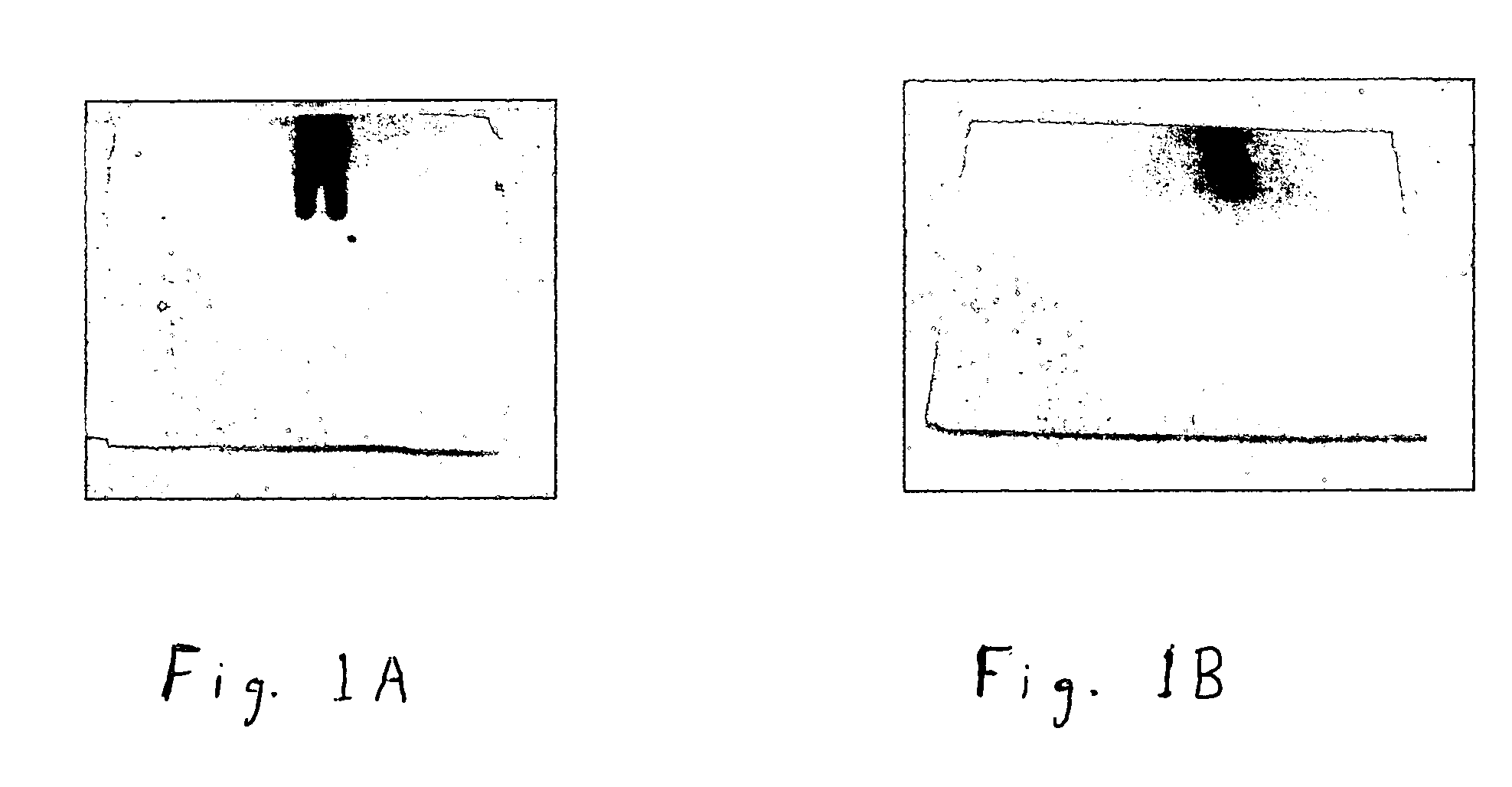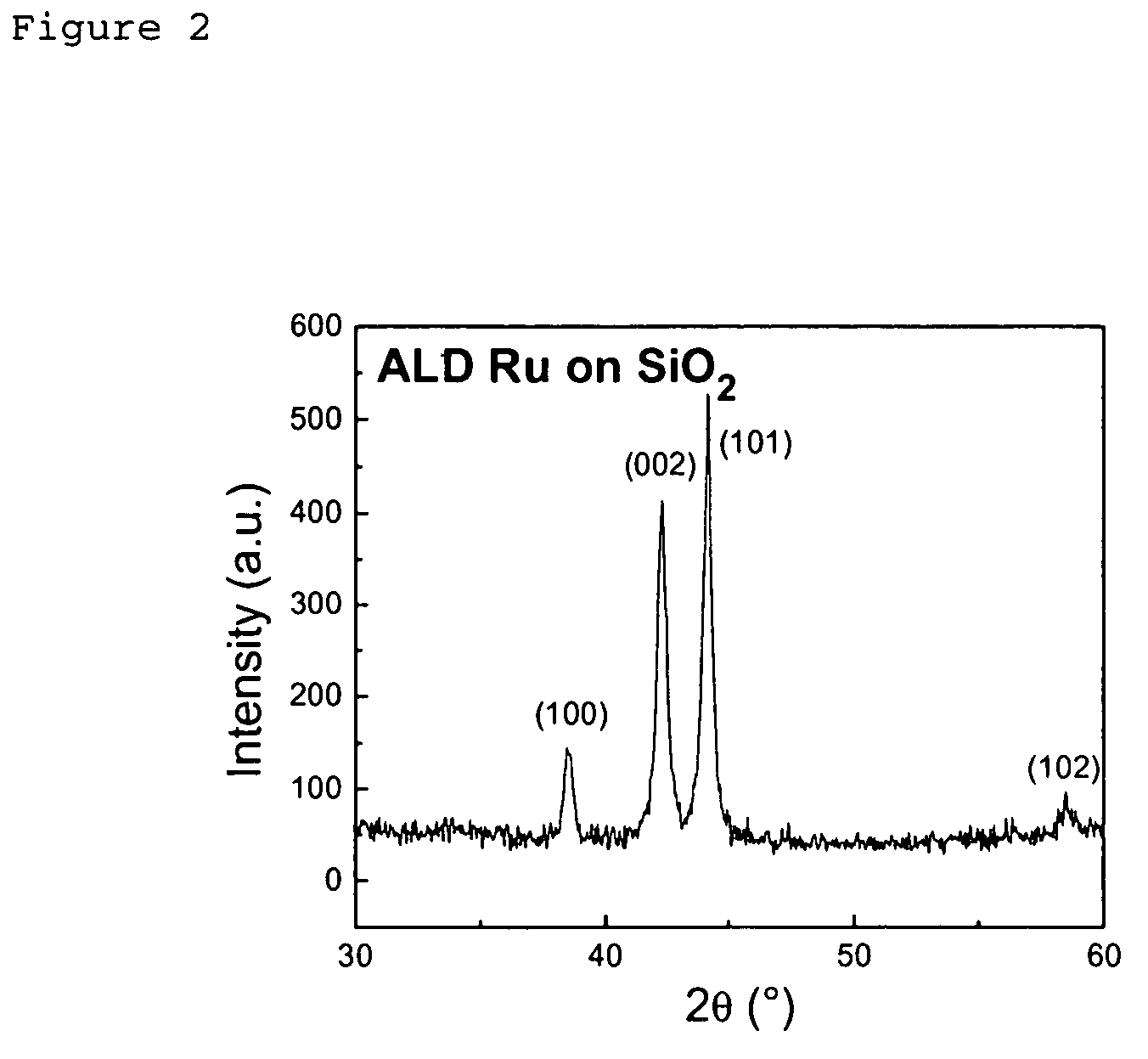ALD deposition of ruthenium
a technology of ruthenium and ald, applied in the direction of chemical vapor deposition coating, semiconductor/solid-state device details, coatings, etc., can solve the problems of uniform deposition on some dielectric surfaces, inability to electroplate copper directly onto diffusion barrier materials without a thin copper seed layer, and no known solution for direct deposition of ruthenium
- Summary
- Abstract
- Description
- Claims
- Application Information
AI Technical Summary
Benefits of technology
Problems solved by technology
Method used
Image
Examples
example
[0030]To deposit nucleation problem free ALD ruthenium on SiO2, the substrates are exposed to the plasma prior to the ALD of ruthenium for 10 minutes at the deposition temperature. Nitrogen, oxygen and hydrogen plasma may be used at 500 Watts of plasma power. In general, hydrogen plasma exposure does not, in and of itself, produce any significant improvement in terms of producing a uniform layer. However, oxygen plasma exposed SiO2 produces very uniform, clean looking deposition on the substrates. Eight inch (20.3 cm) SiO2 wafers are used for measurements of uniformity. In terms of sheet resistance, the uniformity of the deposited ruthenium films exhibits less than 5% variation in sheet resistance, without any bare surface spots. Similar improvement is also obtained by nitrogen exposure for 10 minutes on SiO2 substrates. The clean, macroscopic defect free ruthenium metal films deposited by ALD is shown in FIG. 1b.
PUM
| Property | Measurement | Unit |
|---|---|---|
| period of time | aaaaa | aaaaa |
| time | aaaaa | aaaaa |
| temperature | aaaaa | aaaaa |
Abstract
Description
Claims
Application Information
 Login to View More
Login to View More - R&D
- Intellectual Property
- Life Sciences
- Materials
- Tech Scout
- Unparalleled Data Quality
- Higher Quality Content
- 60% Fewer Hallucinations
Browse by: Latest US Patents, China's latest patents, Technical Efficacy Thesaurus, Application Domain, Technology Topic, Popular Technical Reports.
© 2025 PatSnap. All rights reserved.Legal|Privacy policy|Modern Slavery Act Transparency Statement|Sitemap|About US| Contact US: help@patsnap.com



